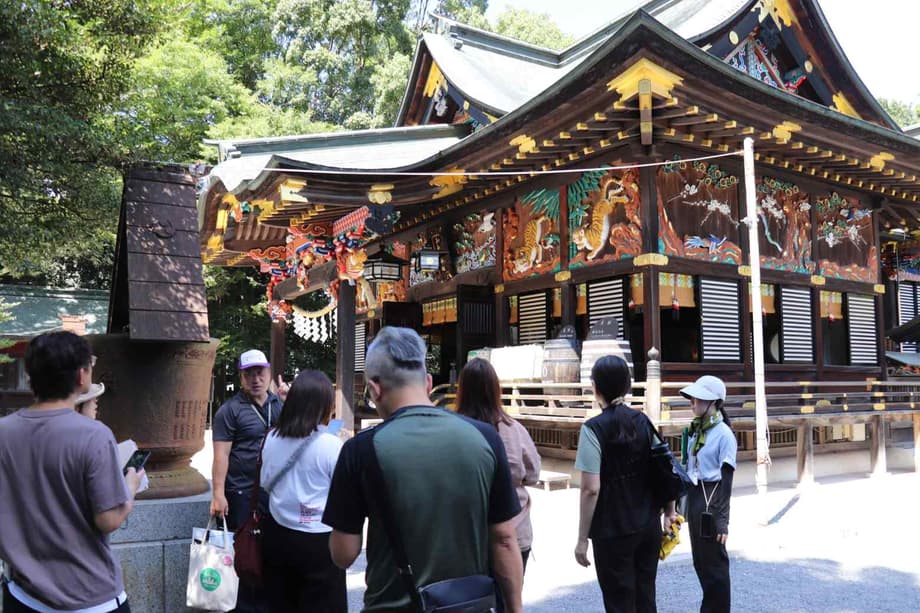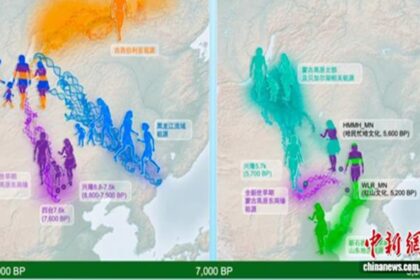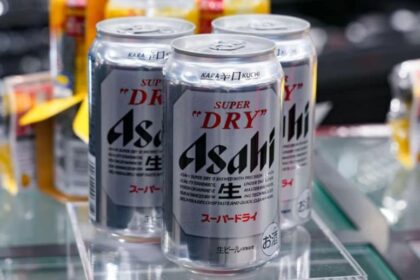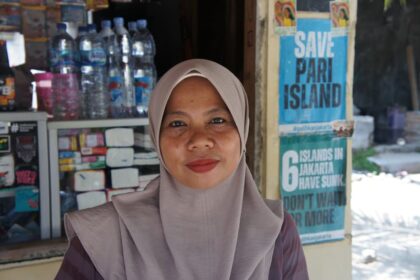Why Saitama is stepping into the spotlight
North of Tokyo, Saitama Prefecture is home to millions of commuters yet remains off the radar for many international visitors. Flights funnel travelers into the capital or into neighboring Chiba, home to two Disney parks, and many first time travelers never look beyond the city center. That pattern is starting to shift. Visitor numbers to Japan have returned to record levels, hotel prices in central Tokyo have climbed, and the search for authentic experiences near the capital has intensified. Saitama sees a window to present its own identity, one built around Edo era streets, mountain temples, museums, gardens, and river valleys that feel a world away from the crowds, yet sit less than an hour from Shinjuku or Asakusa.
- Why Saitama is stepping into the spotlight
- What Saitama offers beyond Tokyo crowds
- The new playbook for overseas promotion
- Target markets and what resonates
- How national agencies are aligning with local goals
- Lessons from other regions in Japan
- Closing the day trip gap
- Getting there and getting around
- Risks and what could hold Saitama back
- What to Know
The prefecture has captured only a small share of foreign stays compared with Tokyo and Kanagawa. It has long been a place for day trippers, not an overnight hub. Local officials and partners want to change that by packaging hands on experiences, curating easier itineraries, and investing in overseas promotion that reaches potential visitors before they lock in a Tokyo only plan. The message is straightforward. Come for the calm, the culture, and the value, then stay long enough to see more than a single street.
The logistics help the case. Omiya, Saitama’s main rail hub, sits on multiple JR lines and is a stop for the Tohoku and Joetsu Shinkansen. Kawagoe, Chichibu, and Nagatoro are reachable in about 30 to 90 minutes on Tobu, Seibu, JR, and Chichibu Railway services. That proximity reduces transfers, saves money, and opens up neighborhoods and landscapes that many visitors to Tokyo never see.
What Saitama offers beyond Tokyo crowds
Saitama packages variety within a compact footprint. The historic merchant townscape of Kawagoe offers Edo charm and old warehouses. Chichibu delivers mountain air, shrines, and seasonal festivals. Nagatoro adds river boats and rock gardens along the Arakawa. Families gravitate to the Railway Museum in Omiya, Moomin Valley Park in Hanno, and Seibuen Amusement Park. Bonsai enthusiasts find a global center at the Omiya Bonsai Art Museum and the surrounding bonsai village. Food travelers chase Sayama tea fields and Kawagoe sweet potato treats, while music fans and sports fans time visits to events at Saitama Super Arena.
Edo heritage in Kawagoe
Kawagoe, often called Little Edo for its preserved warehouse district, is a fast escape from Tokyo. Visitors stroll past kura style storehouses, stop at the bell tower known as Toki no Kane, and snack along Candy Alley where traditional sweets and sweet potato confections line the lanes. The autumn Kawagoe Festival stages ornate floats and musicians, part of a group of float festivals recognized by UNESCO as intangible cultural heritage. Eel restaurants and tea shops add classic flavors, and boutique shops inside restored buildings make it easy to linger. From Ikebukuro, express trains reach Kawagoe in about 30 minutes on the Tobu Tojo Line. Seibu services connect from Shinjuku in under an hour.
Nature and temples in Chichibu and Nagatoro
Chichibu blends forested slopes and spiritual sites. Mitsumine Shrine sits high on a ridge with mountain views and ancient cedar trees. In the heart of town, Chichibu Shrine anchors a neighborhood of small eateries and sake shops. Each December, the Chichibu Night Festival lights the streets with lanterns and floats, also included in the UNESCO recognized group of float festivals. Nearby Nagatoro offers boat rides along the Arakawa River and a slab of rippled rock called Iwadatami that frames the water. Scenic trains, including steam locomotive outings on the SL Paleo Express, pair well with river cruises and seasonal flower fields. For quieter moments, temples in the area host zazen meditation and other cultural experiences.
Museums and family attractions
The Railway Museum in Omiya is one of the finest transport museums in the country, with interactive exhibits that appeal to both enthusiasts and children. The Omiya Bonsai Art Museum and the surrounding neighborhood showcase living art in dozens of intricate bonsai, a short ride from Omiya Station. To the southwest, Seibuen Amusement Park delivers retro themed rides and shows, while Moomin Valley Park in Hanno brings the world of Moomin to life around a wooded lake. Tobu Zoo adds rides and animal encounters in Miyashiro, and tours of the massive underground flood control cavern in Kasukabe create a rare look at modern engineering.
The new playbook for overseas promotion
Saitama’s tourism office has shifted from passive brochures to a campaign built on media relationships and practical tools. During an international sports tournament in 2019, the prefecture set up a media desk tied to Kumagaya Stadium and a Tokyo press center, then produced a native English fact book, a press kit, an FAQ and a library of downloadable images. Staff staged quick inspections at venues and nearby restaurants, built a checklist that ran to well over a hundred tasks, and rolled out press releases within days. To cut through the noise, the team prioritized markets with strong media value and high visitor potential, including the United States and the United Kingdom, while also engaging outlets from countries with teams in the tournament.
The same event became a laboratory for hands on promotion. Host city booths at the press center handed out materials and local sweets, while virtual reality clips of Chichibu and Kawagoe drew reporters into the story. On match days, an information counter at the media center captured interest before and after games. Journalists joined guided visits to schools and community venues, then took part in themed media tours that showcased shrines, old towns, and nature escapes. Feedback gathered afterward flowed into content planning for future years.
That template is now being adapted to peacetime tourism. The prefecture has run familiarization tours for travel agents and writers, especially from nearby markets such as Taiwan, to highlight zazen at a Chichibu temple, tea harvesting in Sayama, and pairings of scenic trains with river boats. Curated itineraries position Saitama as both a day trip from Tokyo and a quieter base with lower hotel rates and fast rail links into the city.
Target markets and what resonates
Saitama is calibrating its message by audience. East Asia accounts for much of Japan’s inbound volume, so short flight markets like Taiwan and Hong Kong remain priorities. At the same time, some Japanese cities have shown that Western travelers will venture beyond Tokyo for culture and food if the story and access are clear. That opens room for dual messaging. One path emphasizes value and convenience. Another focuses on heritage towns, nature, and hands on activities that reward longer stays.
Taiwan and other short haul neighbors
Travel planners in Taiwan have already sampled Saitama on trial itineraries built around meditation at Chichibu’s Shorinji Temple, visits to Chichibu Shrine, tea picking in Sayama, and open air rides that link trains and river boats. For these travelers, quick access from Narita or Haneda, the ease of pairing Saitama with Tokyo shopping, and a steady supply of food stops and photo friendly streets make a strong case. Promotions that bundle rail passes, museum entry, and seasonal events can turn a half day outing into a full day or an overnight.
Reaching Western travelers
For visitors from the United States, Europe, and Australia, Saitama’s appeal often starts with story. The idea of a living Edo town in Kawagoe, a float festival in winter light, a world class railway museum, or a mountain shrine above a sea of trees speaks to deeper curiosity. Clear English content, reliable maps, and easy booking for guided walks, tea workshops, bonsai visits, and private car transfers help these travelers commit. Boutique and heritage accommodation near Kawagoe and in the Chichibu area, along with access to private guides, can encourage stays that stretch beyond a single night.
How national agencies are aligning with local goals
Japan’s national tourism and trade agencies have made food and regional discovery a shared theme, and that dovetails with Saitama’s push. The Japan National Tourism Organization (JNTO) promotes travel to Japan through a network of overseas offices, runs a visitor information center, and publishes market data that local destinations can use. The Japan External Trade Organization (JETRO) and the Japan Food Product Overseas Promotion Center (JFOODO) have embraced food as a driver for both inbound travel and exports, signing a cooperation agreement with JNTO in late 2022. Together they showcase regional products and gastronomy at major events to spur travel and sales.
This alignment gives Saitama clear hooks. Sayama tea can anchor tasting and harvesting experiences. Kawagoe sweet potato dishes and confectionery make walkable food trails. Local sake and tofu shops add depth to town strolls. A bonsai themed day that combines the Omiya museum with a hands on workshop taps into a global community of enthusiasts. When paired with national messaging and easy booking tools, these stories convert interest into action. Travelers can learn more about national efforts through the Japan National Tourism Organization and look for local itineraries that mirror those themes.
Lessons from other regions in Japan
Across Japan, cities that invested early in clear branding, access, and community partnership have drawn visitors beyond the usual triangle of Tokyo, Kyoto, and Osaka. Saitama’s neighbors and peers offer useful comparisons, from anime driven pilgrimages to accessibility programs and outdoor adventure development.
What anime taught a small town
In Saitama’s Washimiya district, fans of the anime series Lucky Star began visiting the local shrine after it appeared in the show. The local commerce group built trust with fans, worked with copyright holders, and created events and products that respected the original content. The result was a sustainable form of contents tourism that benefited both visitors and residents. The lesson is transferable. When communities invite fans into the planning and keep communication open, pop culture can be a stable bridge that brings travelers to less visited neighborhoods.
Accessibility and multilingual readiness
Takayama in Gifu Prefecture, a city with a fraction of Tokyo’s population, saw strong growth after a long effort to welcome international travelers. The city installed multilingual signs, published maps in many languages, created barrier free routes, and worked with hotels on accessible rooms. Public Wi Fi and clear websites removed friction for independent visitors. Saitama has some of these elements already. Extending them across more sites and stations, along with consistent English pages and booking links, would lower the final barriers for first time visitors.
Adventure and experiential travel
Another trend with momentum is adventure and experiential travel, a global market measured in the hundreds of billions of dollars. Regions like Tohoku are building products that mix outdoor activity with cultural immersion. Saitama has assets that fit this mold. Hiking in the Okuchichibu mountains, cycling along the Arakawa River, canyoning in summer, farm visits in Sayama, and stargazing in high valleys can be curated into packages that start and end near Tokyo. These experiences diversify the appeal beyond townscapes and museums and encourage stays across the week, not just on weekends.
Closing the day trip gap
Day trips are a solid first step, yet the biggest gains for local businesses come when travelers sleep, eat, and explore over two or three days. To convert same day visitors into overnight guests, Saitama can focus on evening experiences and accommodation variety. Kawagoe is already experimenting with night events and seasonal light ups. Lantern walks, guided food tours, and small theater or music performances can fill the hours after sunset. In Chichibu, winter festivals and clear skies lend themselves to illuminated streets and night photography workshops. Coordinating last train times, shuttle buses, and luggage forwarding would make it easier to commit to a stay.
Accommodation choice matters. A mix of design forward small hotels in Kawagoe, renovated merchant houses turned into inns, and countryside lodges near Chichibu would broaden options beyond business hotels. Partnerships with boutique operators and incentives to restore heritage buildings can speed that shift. Pricing packages that include museum entry, transit, and dinner reservations can take the guesswork out of planning. Training in service English, allergy friendly menus, and cashless payment systems will help staff deliver consistent experiences.
Getting there and getting around
From central Tokyo, Omiya Station is about 30 minutes by JR lines and roughly 25 minutes by Shinkansen from Tokyo Station. Kawagoe sits about 30 minutes from Ikebukuro on the Tobu Tojo Line and around 45 to 60 minutes from Shinjuku on Seibu services. Seibu limited express trains reach Seibu Chichibu from Ikebukuro in roughly 80 minutes. Nagatoro is accessible on the Chichibu Railway via transfers at Kumagaya or Yorii. Within the prefecture, IC cards are accepted on trains and buses, and taxis are readily available near major stations. Ride sharing is limited, so visitors should plan on rail and bus for most trips.
For travelers who prefer passes, regional rail companies offer discounts that bundle round trip fares and local benefits for Kawagoe and Chichibu. Many museums, parks, and shrines publish English pages with opening hours and seasonal closures. Checking schedules for festivals, steam train runs, and river boats before a trip can help align plans with the most rewarding days.
Risks and what could hold Saitama back
Being next to Tokyo is both a gift and a challenge. The capital’s gravity can pull visitors back before dinner, and the best known attractions dominate search results. Outside the main hubs, English signs and online booking can be inconsistent. Smaller towns face staffing shortages in peak seasons. Without coordination, popular sites can feel crowded on weekends and empty midweek. Community consent is essential as visitor numbers grow, especially around temples, quiet streets, and natural areas.
Saitama has institutions that can help steer this growth. The Saitama Tourism and International Relations Bureau and the Saitama International Association work on multilingual support and community exchange. Continued investment in signage, training, trail maintenance, and nighttime transport, along with open channels for resident feedback, will determine how welcoming and resilient the visitor experience becomes.
What to Know
- Saitama sits just north of Tokyo with fast rail links to Kawagoe, Omiya, Chichibu, and Nagatoro.
- The prefecture is promoting Edo era streets, mountain shrines, river scenery, museums, and gardens as a calm alternative to city crowds.
- Overseas promotion now includes press kits, media tours, virtual reality demos, and targeted outreach in markets like Taiwan, the United States, and the United Kingdom.
- Food and culture take center stage with Sayama tea, Kawagoe sweet potato dishes, bonsai experiences, and sake tastings.
- Day trippers are being encouraged to stay overnight through night events, guided walks, and bundled rail and attraction passes.
- National agencies such as JNTO, JETRO, and JFOODO are aligning on food tourism and regional discovery, which supports prefectures like Saitama.
- Key challenges include limited English booking in some areas, uneven weekend crowds, staffing, and the pull of Tokyo for evening plans.
- Planning tips include checking festival calendars, steam train schedules, and river boat operations, and considering Saitama as a base when Tokyo hotels are full or expensive.












